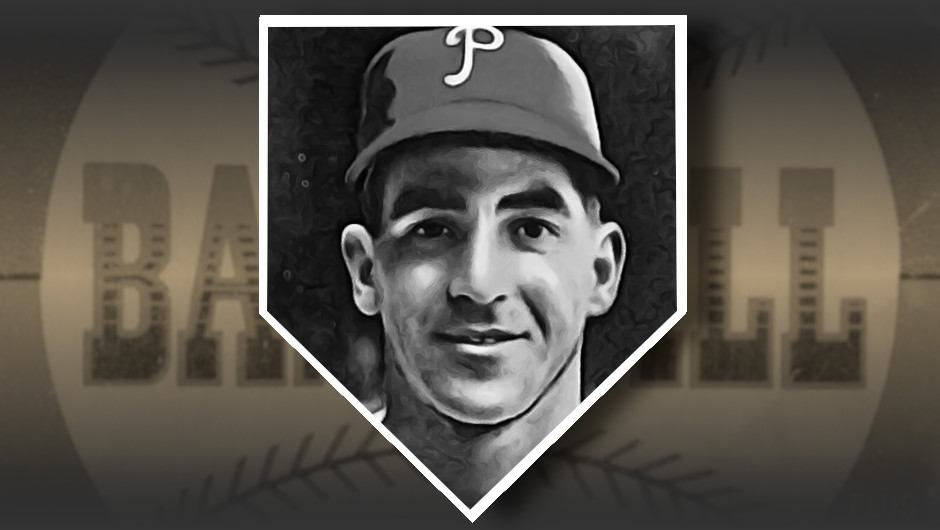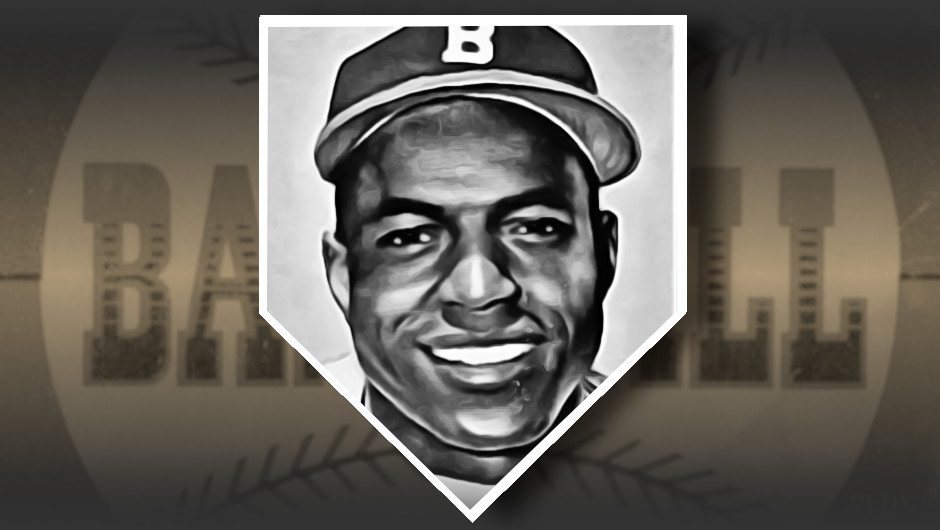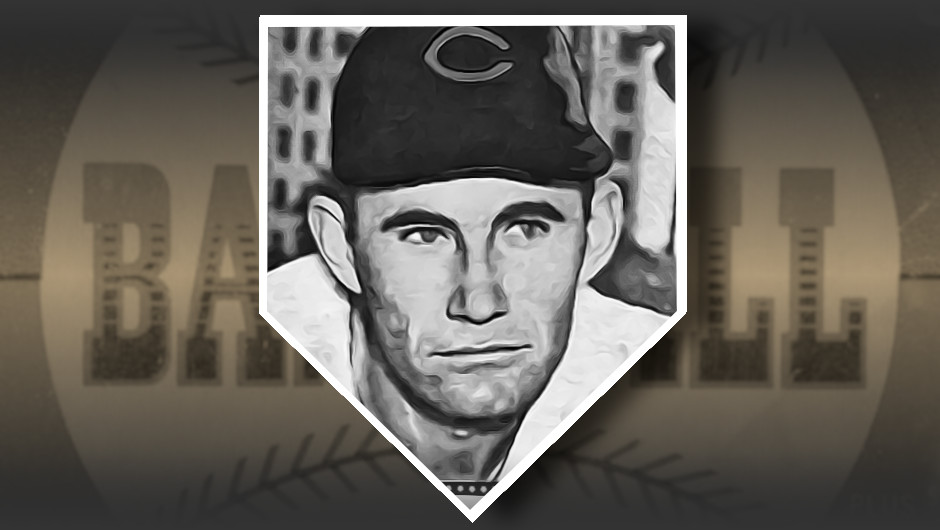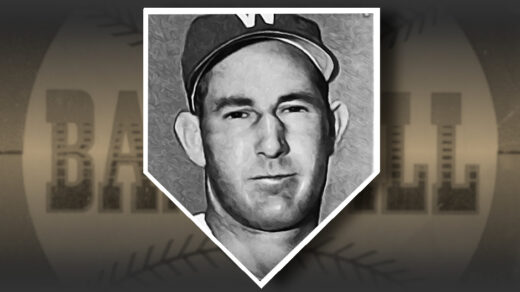Joe Adcock appears in one of the most unique cards in the 1952 Topps set. His card sits in the middle of the hard to find sixth series as card #347. While he appeared in every Bowman set from 1950-1955, this was his only Topps-issued cardboard until Bowman exited the card business.
My Adcock card appears below. It is trimmed, though unlike my Woody Main card the previous scissor-wielding owner took care to leave some borders on the card and generally left it looking pretty nice.
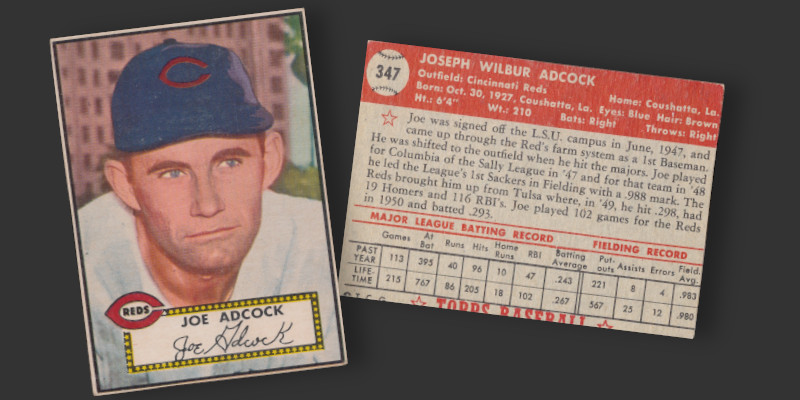
The mere existence of this card isn’t its most arresting aspect. The photograph is taken from an earlier publicity still. Behind the player (and his poorly painted cap) is a skyscraper. This is the only such background in the set and it was not part of the original photograph used by Topps. What building is this? Why would someone take the trouble to use it on the card?
Although he would become better known as a member of the Milwaukee Braves, Adcock was playing in Cincinnati at the time this card was produced. A review of large buildings in the area quickly brought up pictures of Carew Tower, a combination hotel and department store that stood as the city’s tallest structure from 1930-2010. It was certainly one of the two most recognizable towers around at the time, making it a logical choice for use as a backdrop for someone seeking to drive home a connection to the city. There is a bit of depth appearing in the facade of the pictured building, a characteristic in keeping with the overall shape of the actual structure. The number of windows on the card do not quite match up with the building shown below, but the ones appearing on the card do not appear to be completely symmetrical. I believe the artist coloring the photo chose to enlarge the windows in an attempt to keep them from becoming obscured as straight lines in the distant background.
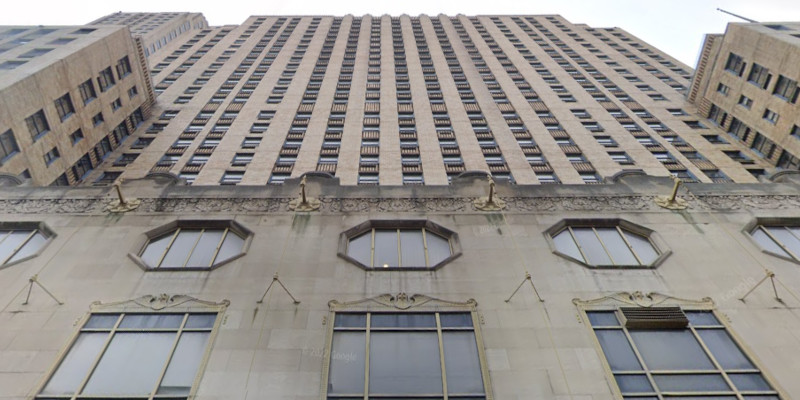
Adcock Needed Protection
That statement is true pretty much however you take it. In the Braves lineup he was surrounded by Hank Aaron and Eddie Mathews, making this potentially the trio of teammates with the highest total career home runs ever assembled.
He was one of the first players to wear a batting helmet. This form of protection has been credited with saving his life after a particularly nasty beaning from Brooklyn pitcher Clem Labine in a 1954 game. Some reports claim Adcock lost consciousness for 15 minutes while others (including the Dodgers’ physician) said he was awake the entire time. Regardless, that cracking sound made by the ball against the helmet’s fiberglass shell was remembered by all in attendance and quickly resulted in all teams adopting mandatory helmets by the start of the 1956 season.
Another hit by pitch incident led to Adcock keeping a security detail. New York Giants’ pitcher Ruben Gomez hit him on the wrist in a 1956 game. Channeling his inner George Bell, Adcock charged the mound after he and Gomez “discussed” the pitch on the way to first base. Gomez had another ball in hand by this point and promptly fired another pitch into the approaching slugger before being chased into his dugout. From somewhere in the visitors’ facilities Gomez reportedly obtained an ice pick with the idea of launching a counterattack. He was disarmed before a stabbing could take place. The pair never made up, with Gomez refusing to shake hands and friends sending Adcock death threats. As a result, the Braves first baseman and his roommate Del Rice ended up with security details performing guard duty.
336 Home Runs That Counted (and One That Didn’t)
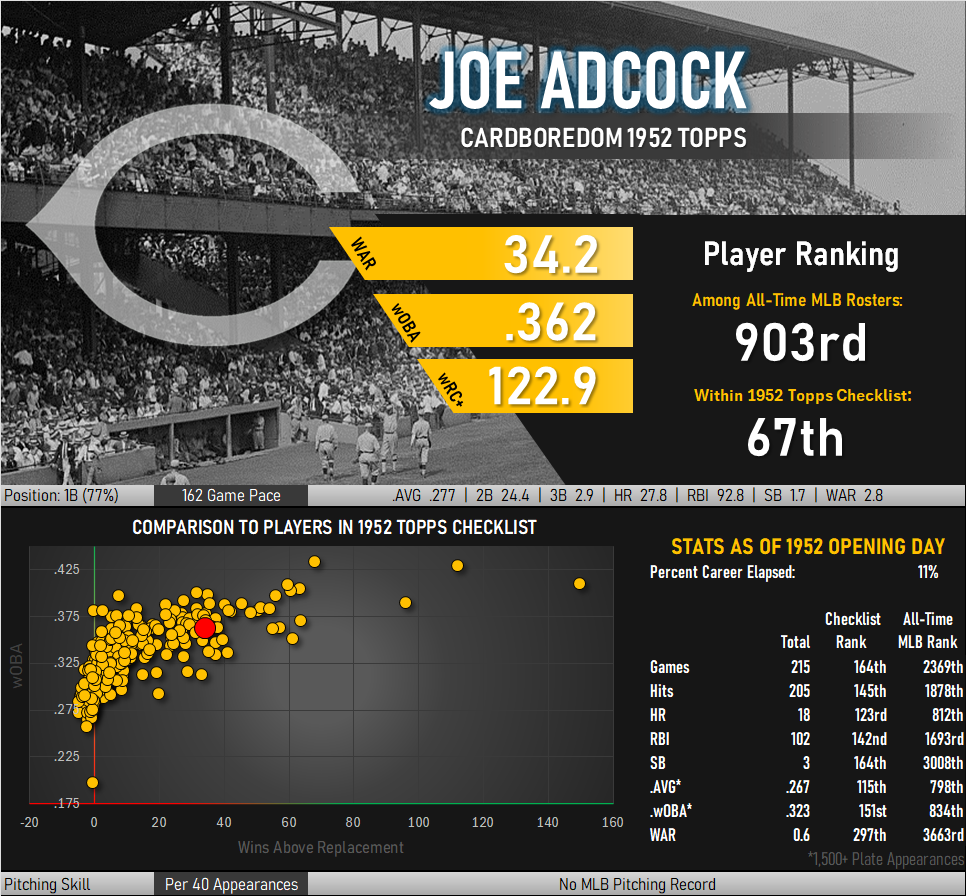
Joe Adcock was a power hitter. He announced this to the world by becoming the first player to ever homer into the centerfield seats at New York’s Polo Grounds. He hit 336 career home runs, more than the lifetime totals of Mo Vaughn, Darryl Strawberry, Hank Greenberg, and David Justice. On several occaisions he belted four in a game. However, it is a homerun that was never credited that may be his most famous.
In 1959 Adcock’s Braves were having zero success against Harvey Haddix and the Pittsburgh Pirates. Haddix pitched 9 perfect innings as well as 3 additional frames in a scoreless pitching duel. A fielding error and an intentional walk of Hank Aaron in the bottom of the 13th put runners on base. Adcock homered to right center but inadvertently passed a confused Aaron between second and third base. This resulted in Adcock being declared out, relegating his home run to a double as he was last safe at second base.


